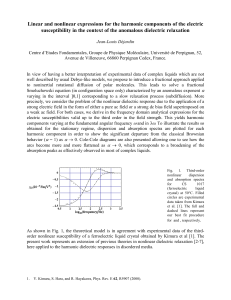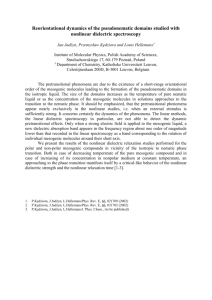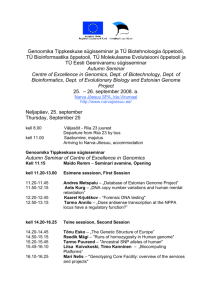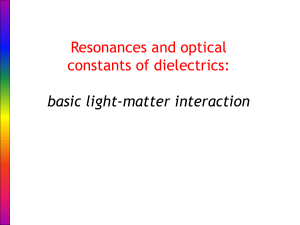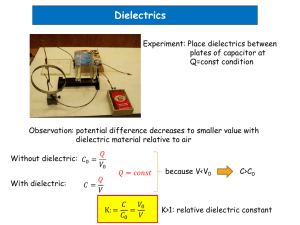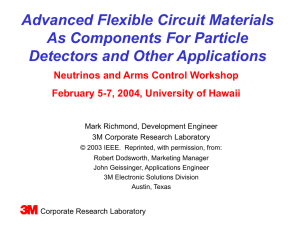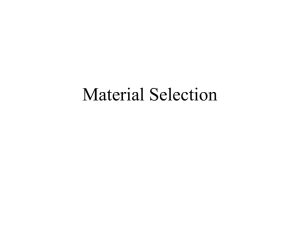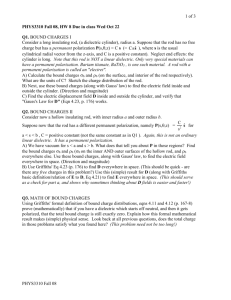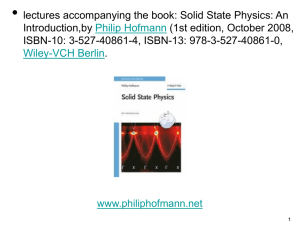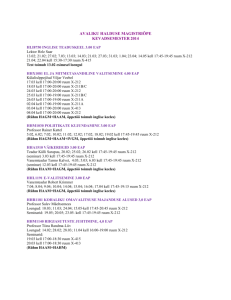Linear and nonlinear dielectric spectroscopy in supercooling and
advertisement
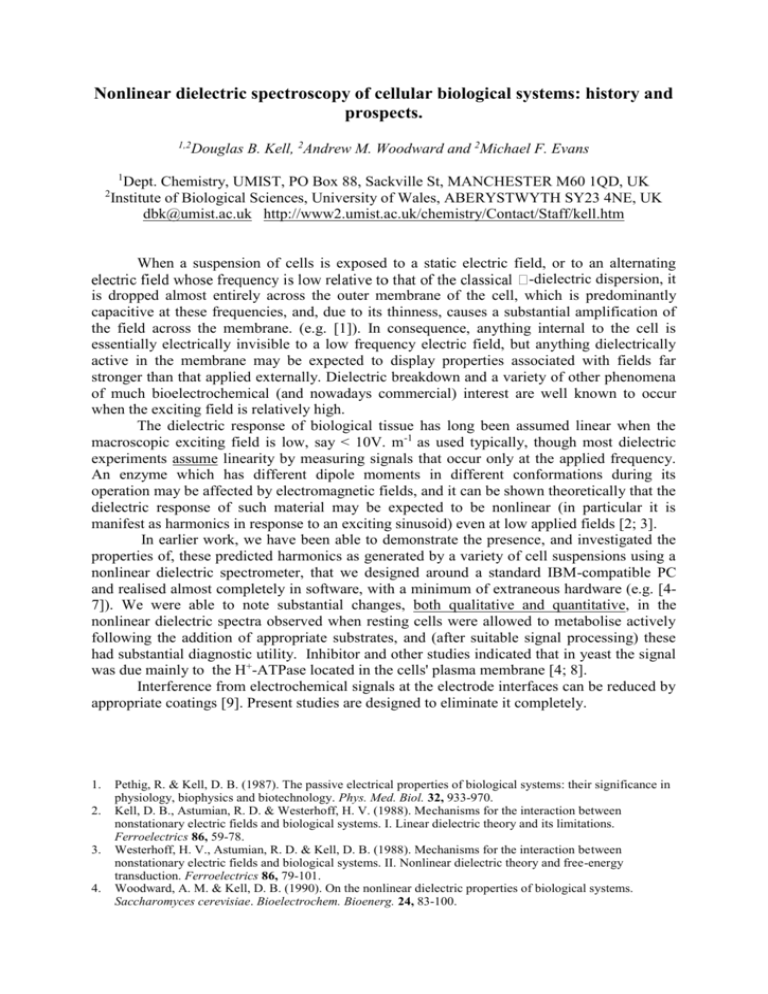
Nonlinear dielectric spectroscopy of cellular biological systems: history and prospects. 1,2 Douglas B. Kell, 2Andrew M. Woodward and 2Michael F. Evans 1 2 Dept. Chemistry, UMIST, PO Box 88, Sackville St, MANCHESTER M60 1QD, UK Institute of Biological Sciences, University of Wales, ABERYSTWYTH SY23 4NE, UK dbk@umist.ac.uk http://www2.umist.ac.uk/chemistry/Contact/Staff/kell.htm When a suspension of cells is exposed to a static electric field, or to an alternating -dielectric dispersion, it is dropped almost entirely across the outer membrane of the cell, which is predominantly capacitive at these frequencies, and, due to its thinness, causes a substantial amplification of the field across the membrane. (e.g. [1]). In consequence, anything internal to the cell is essentially electrically invisible to a low frequency electric field, but anything dielectrically active in the membrane may be expected to display properties associated with fields far stronger than that applied externally. Dielectric breakdown and a variety of other phenomena of much bioelectrochemical (and nowadays commercial) interest are well known to occur when the exciting field is relatively high. The dielectric response of biological tissue has long been assumed linear when the macroscopic exciting field is low, say < 10V. m-1 as used typically, though most dielectric experiments assume linearity by measuring signals that occur only at the applied frequency. An enzyme which has different dipole moments in different conformations during its operation may be affected by electromagnetic fields, and it can be shown theoretically that the dielectric response of such material may be expected to be nonlinear (in particular it is manifest as harmonics in response to an exciting sinusoid) even at low applied fields [2; 3]. In earlier work, we have been able to demonstrate the presence, and investigated the properties of, these predicted harmonics as generated by a variety of cell suspensions using a nonlinear dielectric spectrometer, that we designed around a standard IBM-compatible PC and realised almost completely in software, with a minimum of extraneous hardware (e.g. [47]). We were able to note substantial changes, both qualitative and quantitative, in the nonlinear dielectric spectra observed when resting cells were allowed to metabolise actively following the addition of appropriate substrates, and (after suitable signal processing) these had substantial diagnostic utility. Inhibitor and other studies indicated that in yeast the signal was due mainly to the H+-ATPase located in the cells' plasma membrane [4; 8]. Interference from electrochemical signals at the electrode interfaces can be reduced by appropriate coatings [9]. Present studies are designed to eliminate it completely. 1. 2. 3. 4. Pethig, R. & Kell, D. B. (1987). The passive electrical properties of biological systems: their significance in physiology, biophysics and biotechnology. Phys. Med. Biol. 32, 933-970. Kell, D. B., Astumian, R. D. & Westerhoff, H. V. (1988). Mechanisms for the interaction between nonstationary electric fields and biological systems. I. Linear dielectric theory and its limitations. Ferroelectrics 86, 59-78. Westerhoff, H. V., Astumian, R. D. & Kell, D. B. (1988). Mechanisms for the interaction between nonstationary electric fields and biological systems. II. Nonlinear dielectric theory and free-energy transduction. Ferroelectrics 86, 79-101. Woodward, A. M. & Kell, D. B. (1990). On the nonlinear dielectric properties of biological systems. Saccharomyces cerevisiae. Bioelectrochem. Bioenerg. 24, 83-100. 5. 6. 7. 8. 9. Woodward, A. M. & Kell, D. B. (1991). On the relationship between the nonlinear dielectric properties and respiratory activity of the obligately aerobic bacterium Micrococcus luteus. Bioelectrochem. Bioenerg. 26, 423-439. Woodward, A. M., Jones, A., Zhang, X., Rowland, J. & Kell, D. B. (1996). Rapid and non-invasive quantification of metabolic substrates in biological cell suspensions using nonlinear dielectric spectroscopy with multivariate calibration and artificial neural networks. Principles and applications. Bioelectrochem. Bioenerg. 40, 99-132. Woodward, A. M., Gilbert, R. J. & Kell, D. B. (1999). Genetic programming as an analytical tool for nonlinear dielectric spectroscopy. Bioelectrochem. Bioenerg. 48, 389-396. Woodward, A. M. & Kell, D. B. (1991). Confirmation by using mutant strains that the membrane-bound H+ATPase is the major source of nonlinear dielectricity in Saccharomyces cerevisiae. FEMS Microbiol. Lett. 84, 91-95. Woodward, A. M., Davies, E. A., Denyer, S., Olliff, C. & Kell, D. B. (1999). Non-linear dielectric spectroscopy: antifouling and stabilisation of electrodes by a polymer coating. Bioelectrochemistry 15, 1320.

